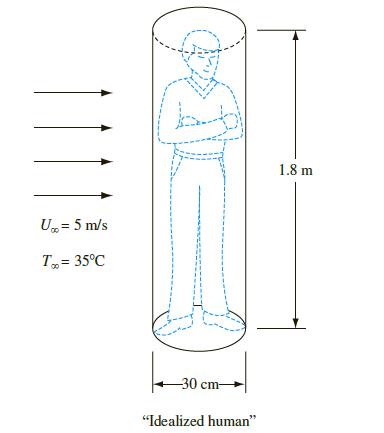The human body is typically modelled as a vertical cylinder that is 1.8 m high and is
Question:
The human body is typically modelled as a vertical cylinder that is 1.8 m high and is 30 cm in diameter, as shown in the figure. Calculate the average rate of heat loss from this body, which is maintained at 37°C, on a windy day when the airstream has a 5 m/s velocity
and is at 35°C. To ascertain “wind chill” effects, compare this result with the heat loss that would occur in “stagnant” conditions, or when it is not windy and the heat transfer is only by natural convection (consider an average heat transfer coefficient of 3.6 W/m2 •K for free convection). What is the wind chill effect if the wind got stronger (10 m/s) and colder (25°C)? Even though the natural convection heat transfer coefficient also changes somewhat, for this calculation consider it to remain the same. Moreover, compare the heat loss in both cases with the typical energy intake, or metabolic heat production from consumption of food, of about 4.325 MJ/day and comment upon your results.
Step by Step Answer:

Principles Of Heat Transfer
ISBN: 9781305387102
8th Edition
Authors: Frank Kreith, Raj M. Manglik, Mark S. Bohn





